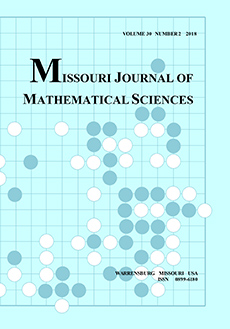Abstract
In mathematics, the prime counting function $\pi(x)$ is defined as the function yielding the number of primes less than or equal to a given number $x$. In this paper, we prove that the asymptotic limit of a summation operation performed on a unique subsequence of the prime numbers yields the prime number counting function $\pi(x)$ as $x$ approaches $\infty$. We also show that the prime number count $\pi(n)$ can be estimated with a notable degree of accuracy by performing the summation operation on the subsquence up to a limit $n$.
Acknowledgments
We thank the Number Theory editors and the referee of the Missouri Journal of Mathematical Sciences for their helpful comments and direction during the review process and gratefully acknowledge their editorial contributions to this work.
Citation
Michael P. May. "Relationship Between the Prime-Counting Function and a Unique Prime Number Sequence." Missouri J. Math. Sci. 35 (1) 105 - 116, May 2023. https://doi.org/10.35834/2023/3501105
Information




